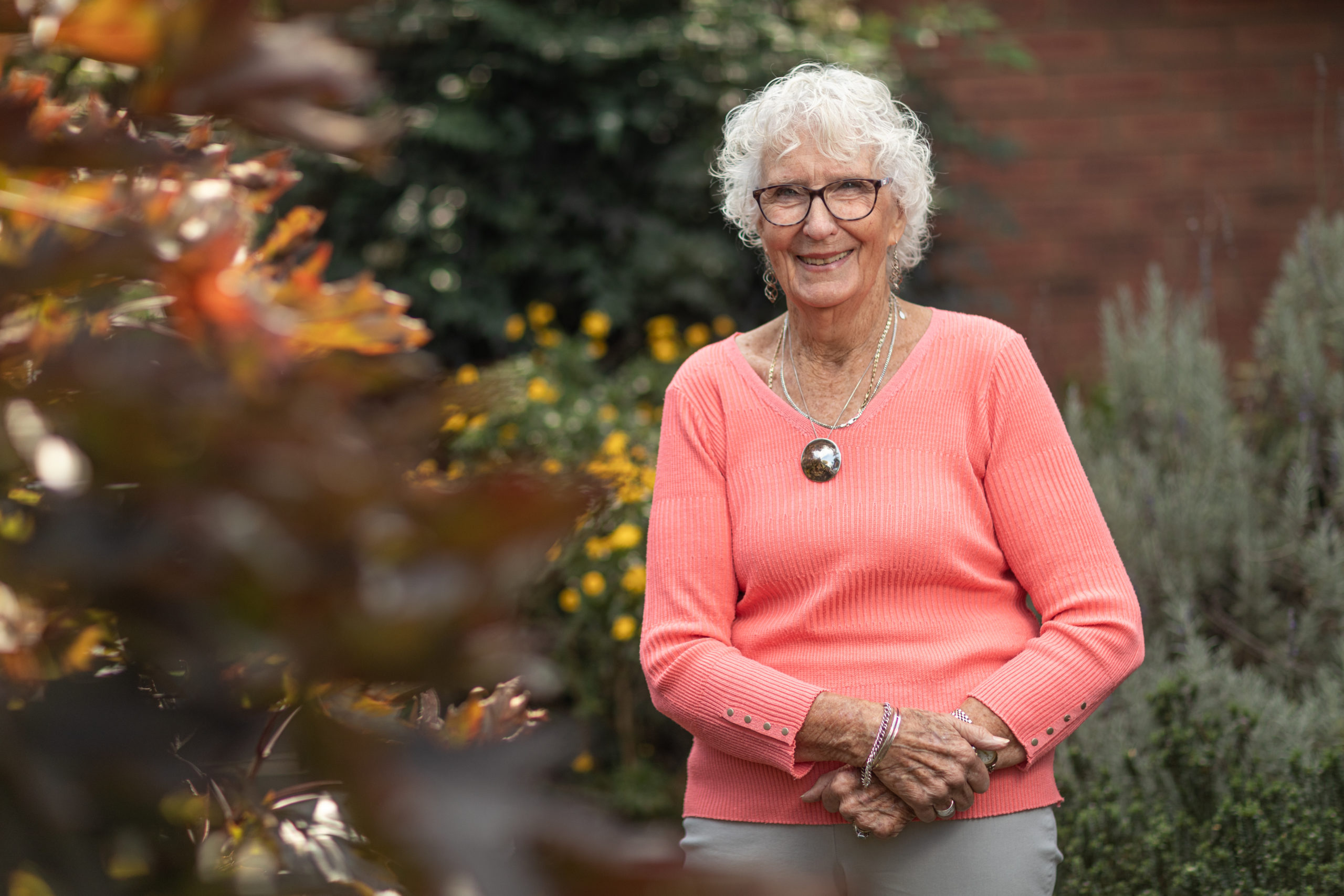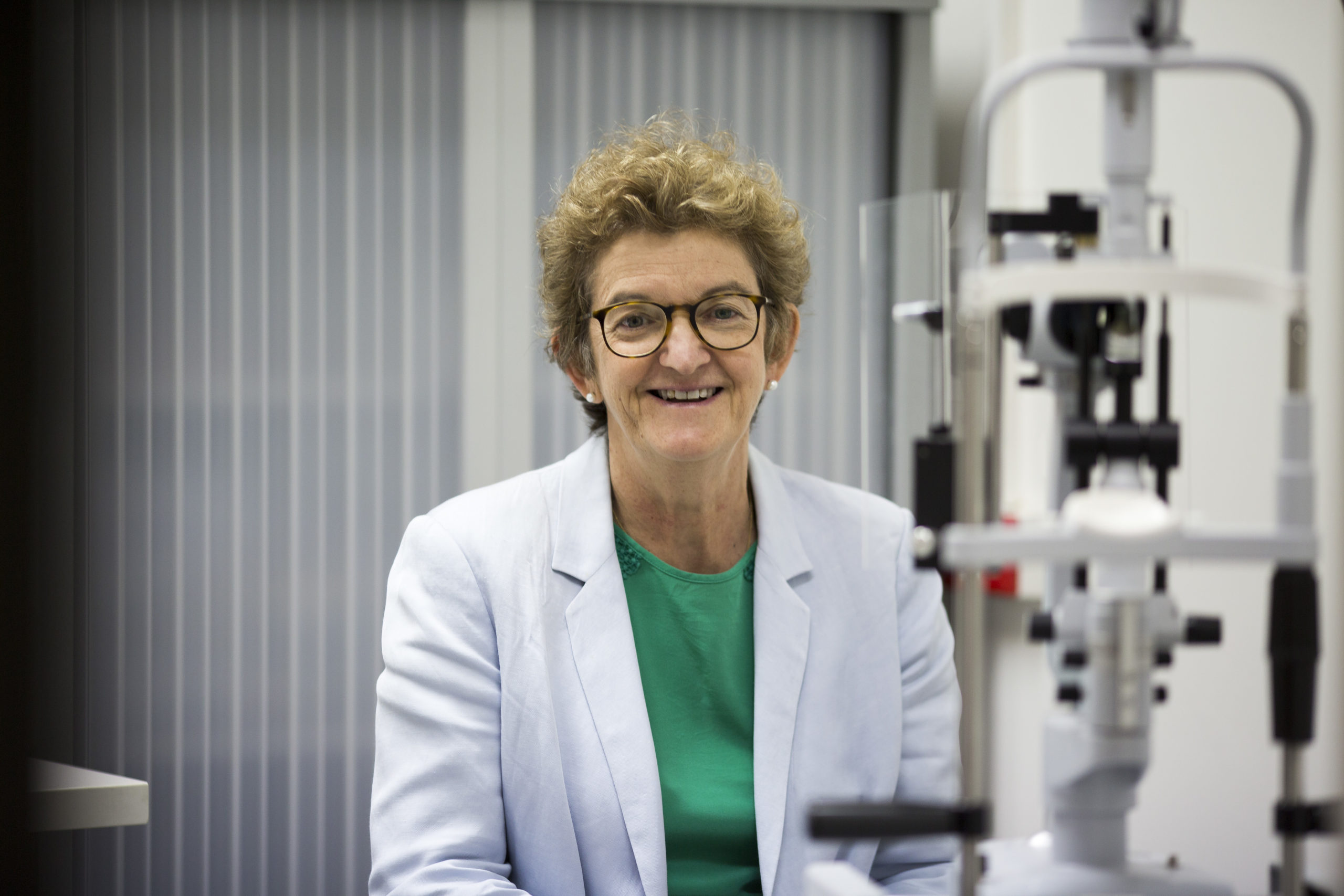This website uses cookies so that we can provide you with the best user experience possible. Cookie information is stored in your browser and performs functions such as recognising you when you return to our website and helping our team to understand which sections of the website you find most interesting and useful.
Stories
AMD research restores Win’s hope for the future
Win Murphy has seen first-hand just how far age-related macular degeneration (AMD) research has advanced in one generation.
Win Murphy’s uncle once told her that ‘when the telephone lines go wobbly, you need to have your eyes checked’. So, when Win noticed her vision changing, she knew what was happening.
“I felt the weight of my family history on my shoulders,” she says.
Win’s father and his four siblings had all been diagnosed with age-related macular degeneration (AMD) – an eye disease that is the leading cause of legal blindness in Australia. At 52, Win discovered she too had the early signs of AMD.
“The first optometrist I saw was very blunt. ‘You’ve got AMD and you’re going to go blind. It’s as simple as that.’ I remember being absolutely devastated,” she says.
Her family history with AMD spurred a desire to take part in a genetic study run by Professor Robyn Guymer AM, now the Deputy Director and Head of Macular Research at CERA, and Win’s dad’s treating doctor.
“We were all invited to participate – my father, his brothers and sisters and all their grown-up children. We felt it was important. It was a different way to make a difference long-term,” she says.
When Win’s eyesight deteriorated even further, she made an appointment with Professor Guymer and went on to participate in CERA’s world-first laser treatment clinical trial. The trial has yielded promising results using nanosecond laser technology to slow the progression of AMD.
“It continues to amaze me how far research into AMD has come, thanks to CERA. I don’t know where I’d be without it. Most probably blind, just like the optometrist said.”

Advancing AMD treatment
When Win’s father was diagnosed with AMD in 1992 there were no treatments available for the disease.
“Back then, being given a diagnosis of AMD was not unlike telling someone they had an incurable disease. We had nothing to offer them. No way to slow down a patient’s vision loss,” says Professor Guymer.
“Many people became distressed by fear and worry, of what the future would be like, which impacted on their health and quality of life.”
“The field of research into retinal and macular diseases was wide open and since then much as been achieved by research,” she says.
Thanks to this research, people with one form of late-AMD (wet AMD) can now access treatment that can help them maintain the best vision for as long as possible.
However, there are still no effective treatments for the other form of late-AMD – dry AMD.
CERA’s macular research team are hoping to create a brighter future for people like Win by transforming our understanding of dry AMD, preventing irreversible vision loss and one day find cures to restore sight.
Win’s hope for the future
Ten years after her laser treatment, the dark patch in the centre of Win’s eyes moved further over her central vision.
Thankfully, Win may now have an opportunity to take part in another clinical trial, run by Professor Guymer.
“I have a lot to look forward to and I’m excited about the possibility of taking part in the clinical trial. If I can get my current vision to hold where it is, I’d be absolutely delighted.”
“It’s incredible how far AMD research has come since my father was first diagnosed. It continues to amaze me, and now I get the benefit. How good is that?”
Tax Appeal 2021
Help our researchers make breakthroughs and innovations that will transform our understanding and treatment of AMD – and give people like Win more moments with the ones they love.
You can donate online at ‘Help CERA unlock the answers to AMD’.


